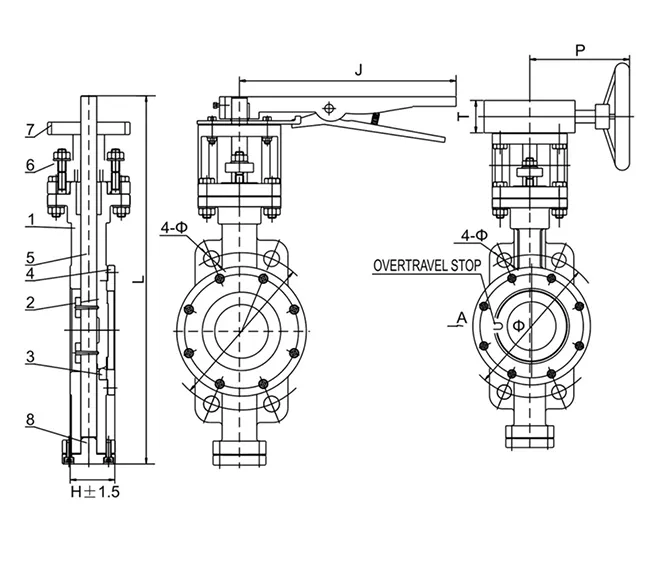Dec . 06, 2024 09:31 Back to list
pressure valve air compressor
Understanding Pressure Valves in Air Compressors
Air compressors are vital tools in various industries, providing the necessary compressed air for numerous applications, from powering pneumatic tools to supplying air for chemical processes. One critical component of these machines is the pressure valve, which plays an essential role in regulating the air pressure within the compressor system. Understanding how pressure valves work and their importance can enhance the efficiency and safety of air compressor operations.
What is a Pressure Valve?
A pressure valve, often referred to as a pressure relief valve, is a safety device designed to control and limit the pressure in a compressed air system. It opens to release air when the pressure exceeds a predetermined limit, preventing potential accidents or damage to the system. This capability is crucial because excessive pressure can lead to equipment failure, and in severe cases, it can cause explosions or injuries.
How Does a Pressure Valve Work?
The pressure valve operates based on a simple mechanism. It typically consists of a spring-loaded diaphragm or piston that is calibrated to a specific pressure setting. When the compressor increases the air pressure in the tank, the pressure pushes against the valve seat. As long as the pressure is within the safe operating range, the valve remains closed. However, when the pressure exceeds the set limit, the force exerted on the diaphragm or piston compresses the spring, allowing the valve to open. This action releases excess air, which reduces the pressure to a safe level before the valve closes again.
Types of Pressure Valves
There are several types of pressure valves used in air compressors, each with distinct features tailored to particular applications
1. Relief Valves These are the most common type of pressure valves used in air compressors. They automatically release air when preset pressure is exceeded, ensuring the safety and integrity of the system.
2. Regulating Valves These valves help maintain a constant output pressure by adjusting the flow of air based on demand. They are useful in systems that require a steady air supply at specific pressure levels.
3. Safety Valves Similar to relief valves, safety valves are crucial for the protection of air compressors. They provide an additional layer of safety by preventing over-pressurization, thereby safeguarding the compressor and connected equipment.
Importance of Pressure Valves
pressure valve air compressor

The significance of pressure valves in air compressors cannot be overstated. Here are some key reasons why they are essential
1. Safety The primary function of a pressure valve is to ensure safety by preventing dangerous pressures from building up in the system. This protection not only safeguards the compressor but also the operators and surrounding personnel.
2. Efficiency By regulating and maintaining proper pressure levels, pressure valves help optimize the performance of the air compressor. When the system operates within its design parameters, it consumes energy more efficiently, reducing operational costs.
3. Longevity of Equipment Continual exposure to high-pressure conditions can lead to excessive wear and tear on compressor components. Pressure valves help mitigate this risk, extending the lifespan of the equipment and reducing maintenance needs.
4. Consistent Performance For applications requiring a specific air pressure, such as spray painting or sandblasting, pressure valves provide a consistent output. This consistency ensures the quality of work and reliable operation.
Maintenance of Pressure Valves
Regular maintenance of pressure valves is crucial for their reliable performance. Here are some tips for proper maintenance
1. Regular Inspection Check the pressure valve’s settings and functionality periodically to ensure it operates correctly. Look for signs of wear or corrosion and replace parts as necessary.
2. Cleanliness Keep the valve and surrounding areas clean to prevent dirt and debris from obstructing its operation.
3. Calibration Regularly calibrate the pressure settings to ensure the valve functions within the desired parameters. This calibration is essential for maintaining accurate pressure levels.
Conclusion
In summary, pressure valves are integral components of air compressor systems that play a critical role in ensuring safety, efficiency, and performance. Understanding their function and importance can lead to better maintenance practices, thereby enhancing the overall operation of air compressors. As industries continue to rely on compressed air technology, the significance of pressure valves will undoubtedly remain paramount in promoting safe and efficient operations.
Share
-
priming-a-pump-with-a-foot-valve-with-strainerNewsAug.23,2025
-
the-importance-of-a-y-strainer-in-pump-protectionNewsAug.23,2025
-
stainless-steel-ball-check-valve-for-high-purity-applicationsNewsAug.23,2025
-
common-applications-for-wafer-type-butterfly-valvesNewsAug.23,2025
-
seat-options-for-a-12-inch-knife-gate-valveNewsAug.23,2025
-
the-lifespan-of-a-typical-dismantling-jointNewsAug.23,2025


